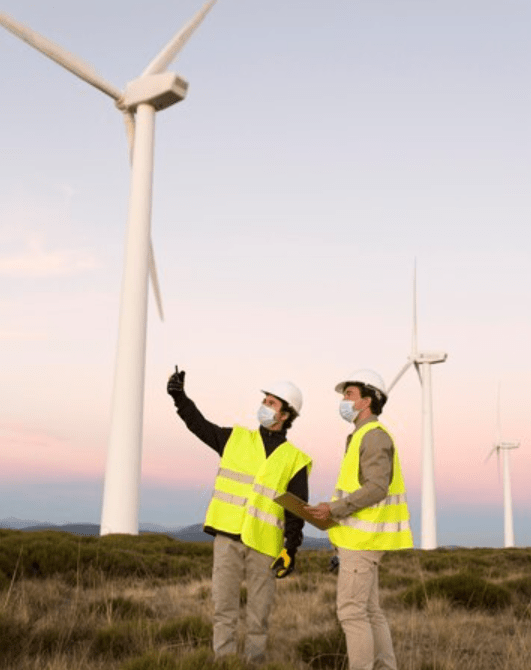Power plant turbines serve as the heart of electricity generation, converting various forms of energy into mechanical energy, which is then transformed into electricity. These turbines play a crucial role in the global energy landscape, powering industries, businesses, and homes with reliable electricity. In this comprehensive guide, we’ll delve into the world of power plant turbines, exploring their types, functions, efficiency considerations, and environmental impact in the context of electricity production.
Understanding Power Plant Turbines
Power plant turbines are mechanical devices that extract energy from a fluid, typically steam or gas, and convert it into rotational motion. This rotational motion is used to drive a generator, which produces electricity. Turbines operate on the principle of Newton’s third law of motion, which states that for every action, there is an equal and opposite reaction. As steam or gas flows over turbine blades, it imparts a force that causes the blades to rotate, thus generating mechanical energy.
Types of Power Plant Turbines
Power plant turbines come in various types including steam turbines, gas turbines, and hydro turbines, each tailored to specific energy sources and operational requirements, playing a critical role in electricity generation across diverse industries and applications.
- Steam Turbines: Steam turbines are the most common type of turbine used in power plants. They operate by expanding high-pressure steam through a series of turbine stages, where it loses energy and drives the turbine blades. Steam turbines can be classified into various configurations, including condensing, back-pressure, and extraction turbines, depending on their design and application.
- Gas Turbines: Gas turbines, also known as combustion turbines, operate by burning fuel, typically natural gas or diesel, to produce hot gases that drive the turbine blades. Gas turbines are often used in combined cycle power plants, where waste heat from the turbine is used to generate steam and drive a steam turbine, maximizing overall efficiency.
- Hydro Turbines: Hydro turbines harness the kinetic energy of flowing water to generate electricity. They are commonly used in hydroelectric power plants, where water is stored in reservoirs or dams and released through turbines to generate power. Hydro turbines can be classified into various types, including impulse turbines and reaction turbines, depending on their operating principle and design.
- Wind Turbines: Wind turbines convert the kinetic energy of wind into mechanical energy, which is then transformed into electricity. They consist of rotor blades mounted on a shaft, which rotates as wind blows over the blades. The rotational motion drives a generator to produce electricity. Wind turbines are widely used in wind farms to harness renewable energy from the wind.
Efficiency Considerations
Efficiency considerations for power plant turbines include optimizing fuel combustion processes, minimizing heat losses, and implementing advanced turbine designs to maximize energy output while reducing operational costs and environmental impact.
- Thermal Efficiency: Thermal efficiency is a measure of how effectively a turbine converts the energy content of its fuel into electricity. Higher thermal efficiency means that more of the fuel’s energy is converted into useful work, resulting in lower fuel consumption and emissions.
- Mechanical Efficiency: Mechanical efficiency refers to the ability of the turbine to convert the rotational energy of the shaft into electricity. Higher mechanical efficiency means that less energy is lost as friction or heat within the turbine, resulting in higher overall efficiency and performance.
- Operational Efficiency: Operational efficiency encompasses factors such as maintenance practices, load management, and turbine control systems that affect the overall performance and reliability of the turbine. Optimizing operational efficiency can help maximize uptime, minimize downtime, and prolong the lifespan of the turbine.
- Environmental Impact: The environmental impact of power plant turbines depends on factors such as fuel type, emissions control technologies, and waste management practices. Turbines powered by renewable energy sources such as wind, hydro, and solar have minimal environmental impact compared to fossil fuel-based turbines, which produce greenhouse gases and air pollutants.
Environmental Impact
The environmental impact of power plant turbines encompasses considerations such as emissions reduction technologies, water usage optimization, and habitat preservation efforts, aiming to mitigate ecological footprints while sustaining energy production for future generations.
- Air Pollution: Fossil fuel-based power plant turbines emit air pollutants such as carbon dioxide (CO2), sulfur dioxide (SO2), nitrogen oxides (NOx), and particulate matter (PM) during combustion. These pollutants contribute to air pollution, smog formation, acid rain, and respiratory diseases, impacting human health and the environment.
- Water Consumption: Steam turbines in thermal power plants require large quantities of water for cooling and steam generation. Water consumption can have significant environmental implications, including habitat destruction, water scarcity, and disruption of aquatic ecosystems, particularly in water-stressed regions.
- Land Use: Wind turbines and hydroelectric turbines require land or water bodies for installation, which can impact local ecosystems and biodiversity. Wind farms may disrupt bird migration patterns and wildlife habitats, while hydroelectric dams can alter river flows and flood habitats, affecting aquatic species and riparian ecosystems.
- Noise and Visual Impact: Power plant turbines, particularly wind turbines, can generate noise and visual impacts that affect local communities and wildlife. Noise pollution from turbines can disturb residents and wildlife, while the visual presence of turbines may impact scenic landscapes and property values.
Mitigation Strategies
Implementing comprehensive monitoring systems, employing advanced maintenance protocols, and investing in cutting-edge technology are key mitigation strategies to address operational risks and ensure the reliable performance of power plant turbines, safeguarding energy production and minimizing downtime.
- Emissions Control Technologies: Implement emissions control technologies such as scrubbers, catalytic converters, and particulate filters to reduce air pollutant emissions from fossil fuel-based power plant turbines. These technologies help minimize environmental impact and comply with regulatory standards for air quality.
- Water Conservation Measures: Implement water conservation measures and alternative cooling technologies, such as dry cooling or closed-loop cooling systems, to reduce water consumption in thermal power plant turbines. This helps mitigate the environmental impact of water withdrawal and discharge on aquatic ecosystems.
- Habitat Restoration and Conservation: Implement habitat restoration and conservation initiatives to mitigate the environmental impact of power plant turbines on local ecosystems and biodiversity. This may include reforestation, wetland restoration, and wildlife habitat enhancement projects to offset habitat loss and fragmentation.
- Community Engagement and Stakeholder Consultation: Engage with local communities, stakeholders, and environmental organizations to address concerns and mitigate the environmental impact of power plant turbines. Consultation and collaboration with affected parties can help identify potential issues, develop mitigation measures, and foster community acceptance of turbine projects.
Conclusion
Power plant turbines play a central role in electricity production, providing a reliable and efficient source of energy for industries, businesses, and households worldwide. Understanding the different types of turbines, their efficiency considerations, and environmental impact is essential for developing sustainable energy solutions that meet growing energy demand while minimizing environmental harm. By adopting efficient turbine technologies, implementing emissions control measures, and engaging with stakeholders, the energy industry can mitigate the environmental impact of power plant turbines and move towards a cleaner, more sustainable energy future.



